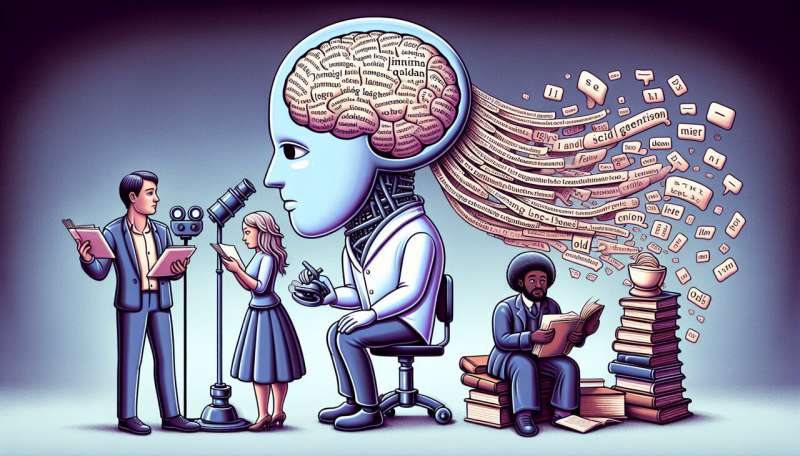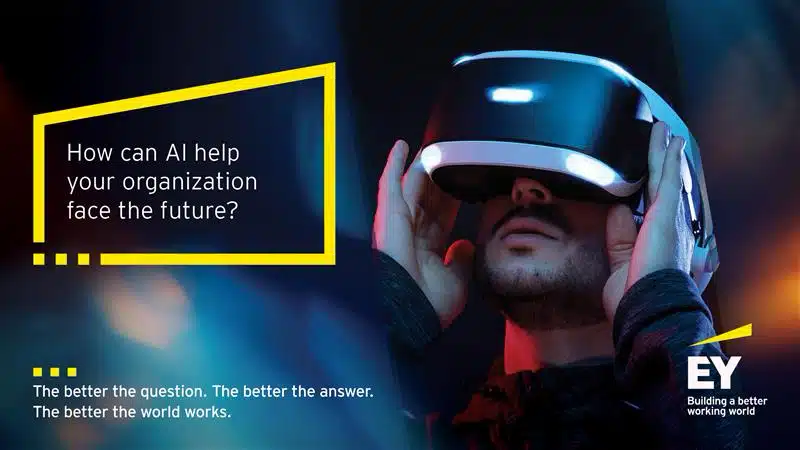Why small language models are the next big thing in AI

The complexity of tools and techniques required to work with LLMs also
presents a steep learning curve for developers, further limiting
accessibility. There is a long cycle time for developers, from training to
building and deploying models, which slows down development and
experimentation. ... Enter small language models. SLMs are more streamlined
versions of LLMs, with fewer parameters and simpler designs. They require less
data and training time—think minutes or a few hours, as opposed to days for
LLMs. This makes SLMs more efficient and straightforward to implement on-site
or on smaller devices. One of the key advantages of SLMs is their suitability
for specific applications. Because they have a more focused scope and require
less data, they can be fine-tuned for particular domains or tasks more easily
than large, general-purpose models. This customization enables companies to
create SLMs that are highly effective for their specific needs, such as
sentiment analysis, named entity recognition, or domain-specific question
answering.
Navigating the AI revolution
Regulatory bodies like the European Union (EU) closely monitor data center
energy usage through the Energy Efficiency Directive. This directive mandates
that data center operators with a total rated power of 500 kilowatts or above
are required to publicly report their energy performance data annually. An
integral aspect of sustainability involves addressing 'Scope 3 emissions'
under the Greenhouse Gas Protocol. While there’s a significant focus on Scope
1 and 2 responsibilities, which measure emissions from a data center’s own
operations and electricity usage, Scope 3 emissions encompass the broader
environmental impact of indirect emissions generated by data center operations
outside its premises. ... The rise of AI technologies presents challenges and
opportunities for the data center industry. By incorporating track busway
solutions into data center infrastructure, operators can address the
challenges posed by escalating power densities while contributing to
significantly reducing Scope 3 emissions. This will position data centers to
meet the demands of AI-driven workloads while ensuring their facilities’
continued reliability and energy efficiency.
Large language models generate biased content, warn researchers

Dr. Maria Perez Ortiz, an author of the report from UCL Computer Science and a
member of the UNESCO Chair in AI at UCL team, said, "Our research exposes the
deeply ingrained gender biases within large language models and calls for an
ethical overhaul in AI development. As a woman in tech, I advocate for AI
systems that reflect the rich tapestry of human diversity, ensuring they
uplift rather than undermine gender equality." The UNESCO Chair in AI at UCL
team will be working with UNESCO to help raise awareness of this problem and
contribute to solution developments by running joint workshops and events
involving relevant stakeholders: AI scientists and developers, tech
organizations, and policymakers. Professor John Shawe-Taylor, lead author of
the report from UCL Computer Science and UNESCO Chair in AI at UCL, said,
"Overseeing this research as the UNESCO Chair in AI, it's clear that
addressing AI-induced gender biases requires a concerted, global effort. This
study not only sheds light on existing inequalities but also paves the way for
international collaboration in creating AI technologies that honor human
rights and gender equity. ..."
Enterprise of the Future: Disruptive Technology = Infinite Possibilities

In the current state, employees are required to navigate multiple enterprise
application interfaces and browse many systems to get information for their
day-to-day activities. It could be a simple activity such as fetching
clarification on leave policies, checking for the leave balance or reporting
an incident to have a laptop or printer issue fixed. To accomplish their daily
responsibilities, employees often end up searching for standard operating
procedures and other relevant data and knowledge. In general, to perform their
day-to-day tasks, they must go through multiple enterprise application
interfaces. This often results in a steep learning curve for the employees,
necessitating them to remember where specific data and information resides, to
understand the functionality of multiple enterprise applications and master
the way they operate. This fragmentation of information across different data
sources and the labyrinth of applications that need to be navigated to perform
daily activities leads to inefficiencies and confusion that ultimately impact
productivity. Moreover, changes within an organisation necessitate training on
new systems and new ways of working, requiring employees to learn and adapt
continuously.
The state of open source in Europe

Europe is renowned for regulations, and the past year has resulted in several
large policy frameworks that influence tech — the Cyber Resilience Act (CRA),
the Product Liability Directive, and the EU AI Act. With lots of information
to digest and react to, both FOSDEM and SOOCON held deep-dive sessions. Over
the past year, the CRA has been of the most concern to open-source
communities, as it puts responsibility for harm caused by software into the
hands of creators. For open-source software, this is complicated, as who is
really responsible? The creator of the open-source software or its
implementor? Many open-source projects have no legal entity that anyone can
hold “responsible” for problems or harm. ... “‘Open-source software and
hardware’ used to be enough to encompass the community and its aims and
concerns. Now it’s ‘Open-source software, hardware, and data’.” An Open
data movement, that aims to keep public data as freely accessible as possible,
has existed for some time. The EU alone has nearly 2 million data sets.
However, this past year saw the open-source community have to care about the
openness of data in completely new ways.
Elemental Surprise: Physicists Discover a New Quantum State

“The search and discovery of novel topological properties of matter have
emerged as one of the most sought-after treasures in modern physics, both from
a fundamental physics point of view and for finding potential applications in
next-generation quantum science and engineering,” said Hasan. “The discovery
of this new topological state made in an elemental solid was enabled by
multiple innovative experimental advances and instrumentations in our lab at
Princeton.” An elemental solid serves as an invaluable experimental platform
for testing various concepts of topology. Up until now, bismuth has been the
only element that hosts a rich tapestry of topology, leading to two decades of
intensive research activities. This is partly attributed to the material’s
cleanliness and the ease of synthesis. However, the current discovery of even
richer topological phenomena in arsenic will potentially pave the way for new
and sustained research directions. “For the first time, we demonstrate that,
akin to different correlated phenomena, distinct topological orders can also
interact and give rise to new and intriguing quantum phenomena,” Hasan
said.
The cloud is benefiting IT, but not business

According to a recent McKinsey survey that engaged about 50 European cloud
leaders, the benefits of cloud migration still need to be recovered. In other
words, cloud migrations are not as universally beneficial as we’ve been led to
believe. I’m not sure why this is news to anyone. The central promise of cloud
computing was to usher in a new era of agility, cost savings, and innovation
for businesses. However, according to the McKinsey survey, only one-third of
European companies actively monitor non-IT outcomes after migrating to the
cloud, which suggests a less optimistic picture. Moreover, 71% of companies
measured the impact of cloud adoption solely through the prism of IT
operational improvements rather than core business benefits. This imbalance
raises a critical question: Are the primary beneficiaries of cloud migration
just the tech departments rather than the more comprehensive business entities
they’re supposed to empower? Cloud computing technology is often associated
with business agility and new revenue generation, but just 37% report cost
savings outside of IT. Only 32% report new revenue generation despite having
invested hundreds of millions of dollars in cloud computing.
Securing Mobile Apps: Development Strategies and Testing Methods
Ensuring secure data storage is crucial in today's technology landscape,
especially for apps. It's vital to protect sensitive information and financial
records to prevent unauthorized access and data breaches. Secure data storage
includes encrypting information both at rest and in transit using encryption
methods and secure storage techniques. Moreover, setting up access controls,
authentication procedures, and conducting regular security checks are
essential to uphold the confidentiality and integrity of stored data. By
prioritizing these data storage practices and security protocols, developers
can ensure that user information remains shielded from risks and
vulnerabilities. Faulty encryption and flawed security measures can lead to
vulnerabilities within apps, putting sensitive data at risk of unauthorized
access and misuse. If encryption algorithms are weak or not implemented
correctly, encrypted data could be easily decoded by actors. Poor key
management, like storing encryption keys insecurely, worsens these threats.
Additionally, security protocols lacking proper authentication or
authorization controls create opportunities for attackers to bypass security
measures.
How Do Open Source Licenses Work? The Ultimate Guide

The type of license a project creator chooses should be determined by legal
counsel, as entering the realm of copyright law requires alignment with the
project creators’ intentions. The type of license, which only qualified legal
counsel can provide, should correspond to what the project creators want to
achieve. Meanwhile, among popular licenses, the MIT License is comparatively
permissive. It allows users to fork or copy the code freely, offering
flexibility in how they utilize it. This stands in contrast to so-called
“copyleft” licenses, like the GNU General Public License, which impose more
stipulations. ... The process of changing a license can be complicated and
challenging, emphasizing the importance of selecting the right license
initially. When altering an open source project’s license, the new license
must often comply with or be compatible with the original license, depending
on its terms. Ensuring that the changes align with the copyright holders’
stakes in the project is crucial. This intricate process requires the guidance
of competent legal counsel. It’s advisable to establish proper licensing from
the project’s outset to avoid complexities later on.
6 Things That Will Tell You If You Are Destined for Leadership
Self-awareness about personality traits naturally leads to increased
understanding and empathy when working with people who possess different
traits than us. Instead of being unable to make sense of others' actions, we
can analyze them and relate them to their inherent personality preference.
This ability can prevent natural triggers towards the unknown from judging,
blaming or taking things personally. ... Knowing about personality preferences
is essential, but it's also crucial to be aware of how people prefer to handle
change. Change is an event, but how change affects people is based on their
personality traits. Some people embrace change so much they want it to be fast
and vast. However, they tend to have difficulty staying focused and completing
tasks. Others have an adverse reaction to change. They honor tradition and
enjoy predictability. ... Everyone has experienced negative situations,
such as making the wrong choices, reacting to someone's words or behaviors
with negative emotions or getting sucked into self-sabotaging thoughts. When
you can bounce back from these situations with a positive mindset and be
productive, you are exercising resilience.
Quote for the day:
"With desperation comes frustration.
With determination comes purpose achievement, and peace." --
James A. Murphy
No comments:
Post a Comment